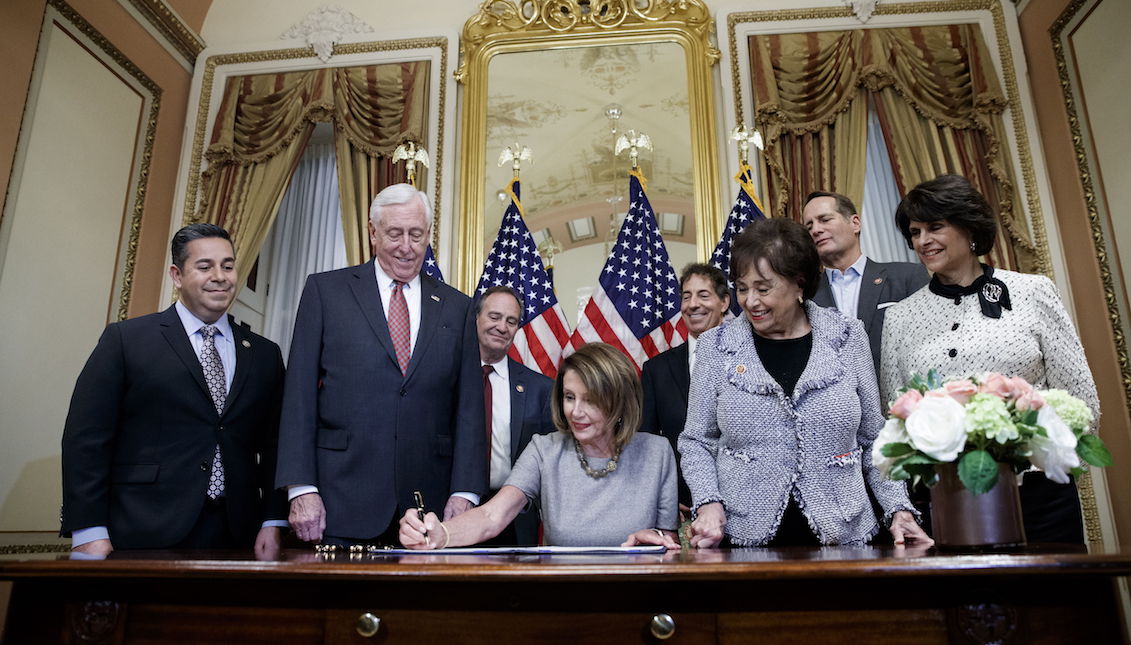
The end of the shutdown: Pelosi’s crushing victory
Last Friday, President Donald Trump yielded to Democratic demands to reopen the federal government and make way for negotiations on border security, but with…
Last Friday, the entire country witnessed the most important Democratic victory to date under the Trump administration.
After more than a month-long government shutdown brought on by President Trump, the White House yielded to the Democratic majority in the House of Representatives, and reopened the government without any funds for the border wall.
The saga began in December when Democrats in Congress, behind House Speaker Nancy Pelosi and Senate Minority Leader Chuck Schumer, managed to provoke President Trump on live television into assuming full responsibility for a potential government shutdown if he didn’t obtain the $5.7 billion he wanted for a border wall.
The brief televised segment would be enough argument for the majority of the country - and the 800,000 federal workers who went without paychecks during the shutdown - to recognize the president's responsibility for the situation over the ensuing weeks.
Despite attempts by the Trump administration and Republican allies in Congress to blame Democrats for the shutdown and a lack of border security, Trump's inability to reach a deal culminated in his yielding to Pelosi's refusal to grant him access to the House to give his State of the Union address to the country.
The Senate proceeded then to evaluate two resolution proposals to end the shutdown: one that contemplated the president's demands, and another introduced by Democrats that proposed reopening the government, along with funding for border security, but with no money allocated for a border wall.
Although neither proposal passed, there was more crossing of party lines from the Republican side than from the Democrats, proving that, even within his own party, the president doesn’t have enough support for his crusade.
Only days later, the president himself agreed to reopen the government for 18 days, during which time he will try to reach an agreement with the Democrats on his wall.
However, if anything is clear it's that Democrats will likely reject any move that facilitates his evidence-free push for a border wall.
RELATED CONTENT
First, if there remained any vestige of the rejection of Nancy Pelosi as head of the Democratic Party in Congress, the events of recent days have put that to rest.
The Speaker of the House has emerged as a true winner in the battle to place limits on President Trump, and as a spokesperson for common sense that is so lacking in the Capitol.
Similarly, if the president was holding on to any hope that reopening the government would grant him his stage for the State of the Union, the office of the Speaker has made it clear that she will not afford him this pleasure.
Drew Hammill, a spokesman for Pelosi’s office, assured the media that the speech would not take place on January 29 as scheduled, despite the fact that the president agreed to reopen the government for 18 days.
"What I said to the president is when the government is opened we will discuss a mutually agreeable date," Pelosi said. “I’ll look forward to doing that, and welcoming Trump in the House chambers when that is done," USA Today quoted.
However, the president does not seem willing to hand over his wall project.
Over the weekend, his Twitter account continued to echo his campaign, and the White House's acting Chief of Staff, Mick Mulvaney, said that at “the end of the day, the President's commitment is to defend the nation and he will do it with or without Congress."
During an interview with Fox News, Mulvaney said the president will continue with the negotiations, and that his initial wall for the entire border is now a proposal of "barriers to discourage illegal crossings" along only about 243 miles "where we need it the most.”











LEAVE A COMMENT: